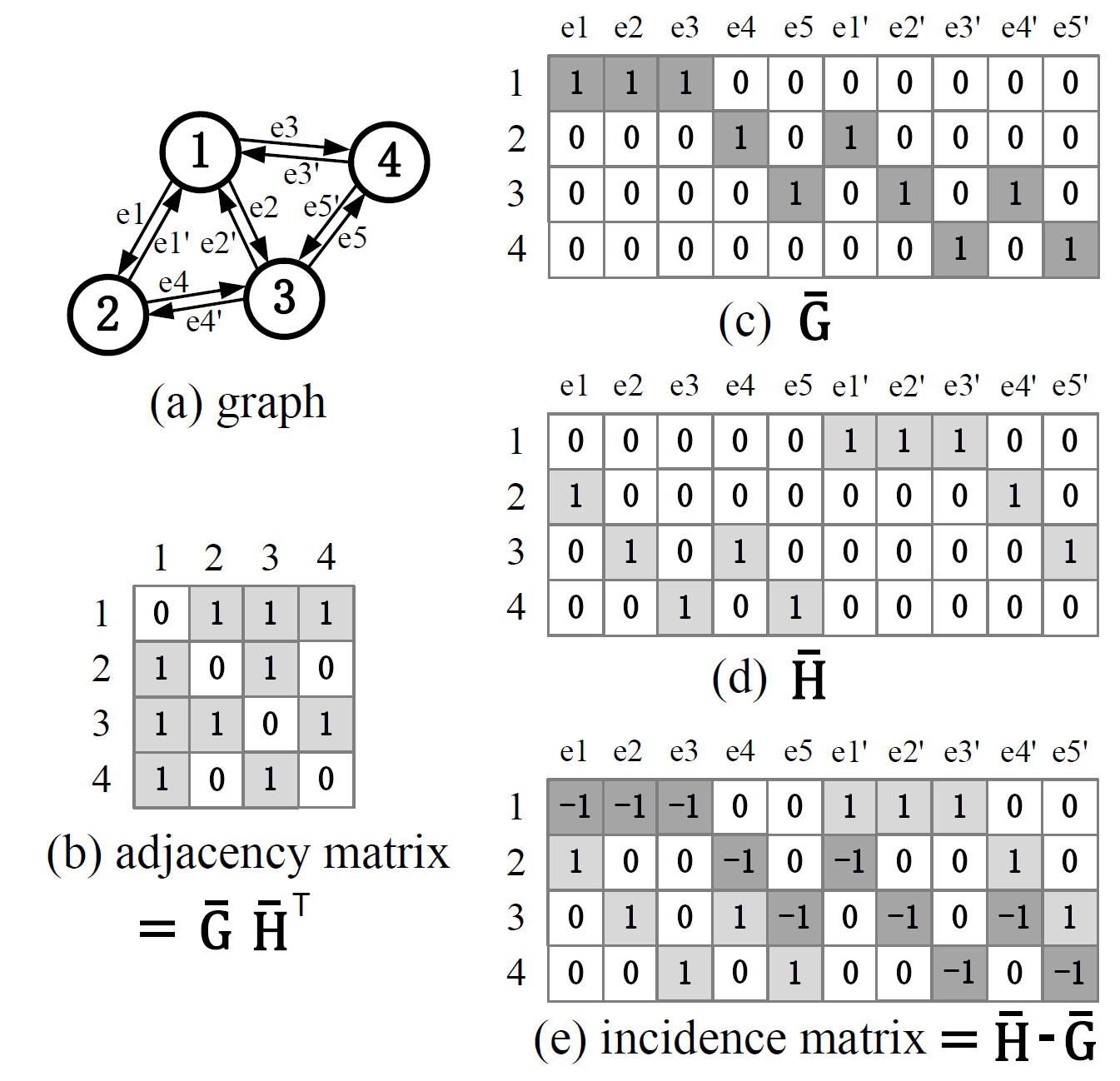src.build_graphs.build_graphs¶
- src.build_graphs.build_graphs(P_np: numpy.ndarray, n: int, n_pad: Optional[int] = None, edge_pad: Optional[int] = None, stg: str = 'fc', sym: bool = True, thre: int = 0) Tuple[numpy.ndarray, numpy.ndarray, numpy.ndarray, int][source]¶
Build graph matrix \(\mathbf G, \mathbf H\) from point set \(\mathbf P\). This function supports only cpu operations in numpy. \(\mathbf G, \mathbf H\) are constructed from adjacency matrix \(\mathbf A\): \(\mathbf A = \mathbf G \cdot \mathbf H^\top\)
- Parameters
P_np – \((n\times 2)\) point set containing point coordinates
n – number of exact points in the point set
n_pad – padded node length
edge_pad – padded edge length
stg – strategy to build graphs. Options:
fc,near,trisym – True for a symmetric adjacency, False for half adjacency (A contains only the upper half)
thre – The threshold value of ‘near’ strategy
- Returns
\(A\), \(G\), \(H\), edge_num
The possible options for
stg:'fc'(default): construct a fully-connected graph 'near': construct a fully-connected graph, but edges longer than ``thre`` are removed 'tri': apply Delaunay triangulation
An illustration of \(\mathbf G, \mathbf H\) with their connections to the graph, the adjacency matrix, the incident matrix is
